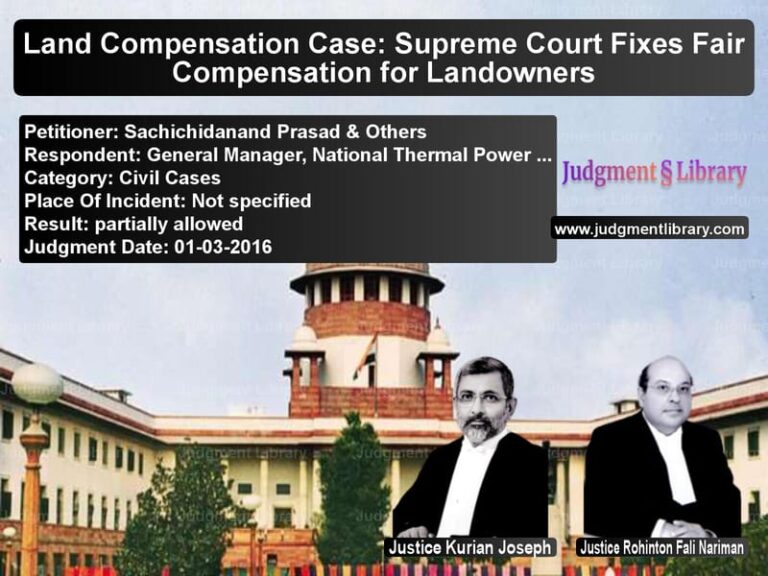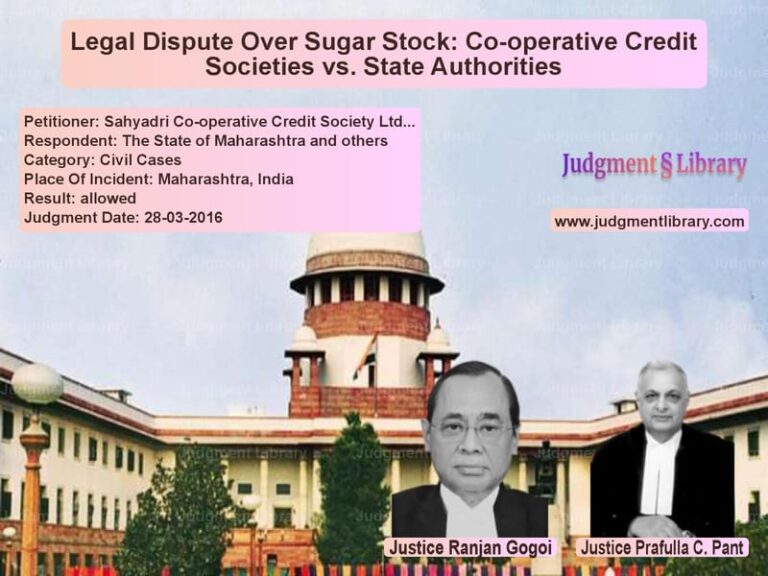Conviction Overturned in Delhi Murder Case Due to Procedural Lapses
The Supreme Court of India, in a significant ruling, has overturned the conviction of Raj Kumar @ Suman, who was previously sentenced to life imprisonment under Section 302 read with Section 120-B of the Indian Penal Code (IPC) in connection with a murder case dating back to 1995. The Court found that crucial procedural lapses had resulted in a miscarriage of justice, particularly the failure to put key incriminating evidence before the accused during his examination under Section 313 of the Code of Criminal Procedure (CrPC).
Background of the Case
The case pertained to a violent attack on October 1, 1995, in which a group of assailants allegedly conspired to murder Jawahar Lal (PW-3) and his relatives. The accused were reportedly attempting to force Jawahar Lal to shut down his cable TV network. The attack led to the death of Chander Shekhar, while several others, including PW-3, sustained serious injuries.
Among the accused was Raj Kumar @ Suman, who was convicted on the basis that he was standing outside the house where the crime took place, holding a katta (country-made handgun). He was found guilty of criminal conspiracy and sentenced to life imprisonment by the Sessions Court in 2003, a verdict upheld by the Delhi High Court.
Arguments by the Petitioner
The appellant, Raj Kumar, contended that:
- There was no direct evidence linking him to the actual crime scene apart from the claim that he was seen standing outside.
- Only PW-5 had testified to his presence, and his testimony was not corroborated by other witnesses.
- The alleged role of the appellant – merely standing outside with a firearm – was not adequately put to him in his Section 313 CrPC statement, violating his right to explain the allegations against him.
- The High Court had erroneously relied on witness testimonies that did not directly implicate him.
Arguments by the Respondents
The State (NCT of Delhi) defended the conviction, arguing:
- The appellant did not cross-examine PW-5, effectively conceding his testimony.
- The presence of the appellant at the scene, armed with a firearm, was enough to establish his role in the conspiracy.
- Minor procedural lapses do not automatically invalidate a conviction unless they result in a failure of justice.
- The appellant had ample opportunity to raise objections regarding procedural errors during trial but failed to do so.
Supreme Court’s Key Observations
1. Failure to Put Key Evidence to the Accused
The Supreme Court emphasized that under Section 313 CrPC, an accused must be given a fair opportunity to explain any incriminating evidence. The judgment noted:
“The only circumstance appearing in the evidence against the appellant – that he was standing outside near the gate of the gallery with a katta in his hand – was not put to him in his statement under Section 313 CrPC.”
The Court ruled that this omission was a serious irregularity that vitiated the trial.
2. Unreliable Witness Testimony
The Court noted inconsistencies in witness testimonies:
- PW-3, the complainant, admitted that he had not seen the appellant on the day of the incident.
- PW-13, who was cited by the High Court as corroborating PW-5’s statement, had in fact made no such mention of the appellant.
3. Procedural Safeguards in Criminal Trials
The judgment reiterated that the trial court must ensure that all material circumstances against an accused are explicitly put before him during trial:
“If a point in the evidence is considered important against the accused and the conviction is intended to be based upon it, then it is right and proper that the accused should be questioned about the matter and be given an opportunity of explaining it.”
4. Delay in Raising Objections
The Court acknowledged that the appellant did not raise objections about the procedural lapse at the earliest opportunity. However, it ruled that this did not mitigate the violation of his rights:
“Considering the passage of time, it will be unjust now at this stage to remit the case to the Trial Court for recording the supplementary statement of the accused under Section 313 of CrPC.”
5. Prejudice to the Accused
The Supreme Court held that the procedural irregularities had caused substantial prejudice to the accused:
“The appellant was not confronted during his examination under Section 313 with the only allegation of the prosecution against him. This resulted in a serious miscarriage of justice.”
Conclusion
Based on these findings, the Supreme Court set aside the appellant’s conviction, stating:
“The conviction of the appellant stands vitiated. In the facts of the case, the option of remand will be unjust. The respondent shall forthwith set the appellant at liberty unless he is required to be detained in connection with any other case.”
The ruling serves as a critical precedent in upholding the rights of accused persons, particularly the importance of fair trial procedures and the necessity of putting all incriminating evidence before the accused for explanation.
Petitioner Name: Raj Kumar @ Suman.Respondent Name: State (NCT of Delhi).Judgment By: Justice Abhay S. Oka, Justice Rajesh Bindal.Place Of Incident: Delhi.Judgment Date: 11-05-2023.
Don’t miss out on the full details! Download the complete judgment in PDF format below and gain valuable insights instantly!
Download Judgment: raj-kumar-@-suman-vs-state-(nct-of-delhi)-supreme-court-of-india-judgment-dated-11-05-2023.pdf
Directly Download Judgment: Directly download this Judgment
See all petitions in Murder Cases
See all petitions in Bail and Anticipatory Bail
See all petitions in Fraud and Forgery
See all petitions in Judgment by Abhay S. Oka
See all petitions in Judgment by Rajesh Bindal
See all petitions in allowed
See all petitions in Quashed
See all petitions in supreme court of India judgments May 2023
See all petitions in 2023 judgments
See all posts in Criminal Cases Category
See all allowed petitions in Criminal Cases Category
See all Dismissed petitions in Criminal Cases Category
See all partially allowed petitions in Criminal Cases Category







